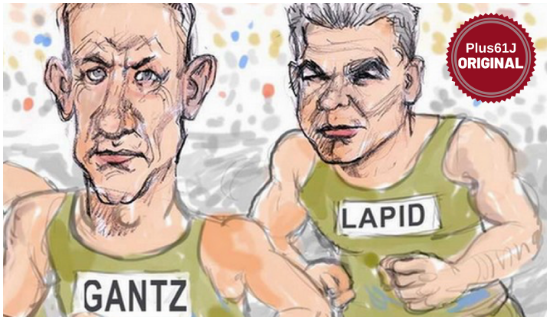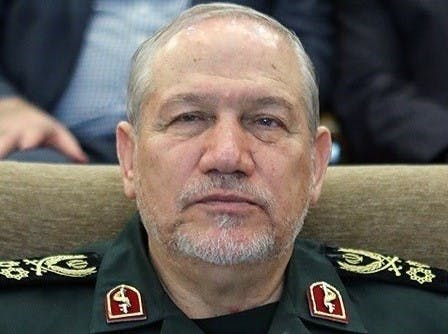Published: 28 February 2019
Last updated: 4 March 2024
In the two months since Netanyahu called an election, opinion polls have constantly indicated that the Likud would gain about 30 seats and thereby emerge as the largest party. President Rivlin, according to Israeli law, would then ask the party with the best prospect of forming a coalition to form a government with the other parties.
Initially, that looked like being Likud. But the first opinion polls since the formation of ‘Blue and White’ – six weeks before the actual election – have predicted that a joint Gantz-Lapid ticket would gain more seats than the Likud.
Despite the charges of corruption levelled against him, which the Attorney-General will rule on shortly, Netanyahu is regarded as the national goalkeeper, the guarantor of security, who will protect each and every family. This takes precedence over whether or not he possesses a moral compass or indeed his ideological support for the settlement drive on the West Bank.
Moreover, many Israelis recognise that Netanyahu has given a decade of relative stability – free from the economic woes of the West. Even so, if elected, this would be his fifth administration and there are many today who would wish to see a new face at the helm of the country’s affairs.
This imagery of security and stability has served Netanyahu well during his previous four administrations. However, on this occasion three former IDF chiefs of staff, Benny Gantz, Gabi Ashkenazi and Moshe Yaalon have joined Yair Lapid. They cannot be labelled as wishy-washy pacifists. On the other hand, the imagery of an elected military junta ruling Israel does not create enthusiasm amongst liberals.
Since Menahem Begin’s election in 1977 – when Labour split due to accusations of stagnation and corruption – the Likud has been in power for 28 out of the last 42 years. More if the rotational government of Labour and Likud (1984-1988) is taken into account. Likud has become the natural party of government. The chronological gaps are filled in by the centre-right Kadima governments of Sharon and Olmert and the Labour-led coalitions of Rabin and Barak.
The dominance of the far-right
Yet centre parties in Israel do not have a good record of longevity. In 1999 Mifleget Hamerkaz was formed through splits in both Labour and Likud and led by military men, Yitzhak Mordechai and Amnon Lipkin-Shahak. It gained six seats at the 1999 election – and then gradually withered and died through dissension and schism.
When Netanyahu’s outgoing coalition was formed in 2015, the Centre-Right (Likud and Kulanu) possessed 40 seats. The far Right including the right wing haredim accounted for another 27 seats. Together Netanyahu possessed a blocking majority in the Knesset of 120 seats. This has been the pattern of Netanyahu’s administrations ever since the far-right emerged in 1979 as a result of Menahem Begin’s agreement with Anwar Sadat in the Camp David agreement.
Yet whenever a pragmatic decision has to be made – specifically the return of territory in exchange for peace – there was always a split for ideological reasons. All Likud prime ministers have therefore been worried that they would be outmanoeuvred from the far-right.
[gallery columns="1" size="large" ids="21566"]
Begin was concerned about the Tehiya party, Shamir about Tsomet and Moledet, Netanyahu about Naftali Bennett’s Habayit hayehudi and Avigdor Liberman’s Yisrael Beiteinu. However, from being an irrelevant fringe in the 1980s, the far-right has grown in strength and importance – and in representation in the Knesset.
Since his return to power in 2009, Netanyahu has avoided antagonising the far-right in his governments. Any peace plan or meaningful negotiations with the Palestinians would essentially mean the collapse of his government. But the practice of the politics of stagnation has been accompanied by attacks on the judiciary, academia and those who work in the arts. The election of Donald Trump in 2016 neatly fitted into the prevailing mindset of the right in Israel.
Illiberalism and the diaspora
The propagation of illiberalism in Israel has provoked criticism from Diaspora communities who live in democratic liberal societies amongst non-Jews. The nation-state bill was passed last summer with 62 in favour, 55 against and two abstentions. Its critics such as President Rivlin and the liberal wing of the Likud suggested that it was fundamentally a blow against democracy and an airbrushing out of existence of national minorities in Israel – hence the protests of the ever-loyal Druze community. Jewish organisations in the US and the UK echoed such criticism.
Netanyahu’s cultivation of illiberal nationalist regimes in Poland and Hungary – where the whiff of anti-Semitism could be smelled – strongly antagonised Diaspora Jewish leadership. Why was it right to accuse Corbyn of anti-Semitism, but to remain silent when there were incidences of anti-Jewish behaviour in Orban’s Hungary?
Moreover, according to several surveys, three quarters of British Jews have opposed the settlement drive on the West Bank while at least 70% of American Jews have twice shown their support for Netanyahu’s nemesis, Barack Obama.
The growing distance between many Diaspora Jews and Netanyahu loyalists was symbolised by the different approach to President Trump. The former, total disdain, the latter, complete adulation.
[gallery columns="1" size="large" ids="26248"]
Cultivating the Kahanists
Perhaps the most widely criticised act of Netanyahu’s desire to retain power has been his egging on of the fringe far-right group, Otzma Yehudit (Jewish Power) to join the Habayit Hayehudi/Tkuma list. The group did so on February 20 and earned the opprobrium of many Diaspora bodies, including the US lobby group AIPAC, usually reticent to criticise Netanyahu.
The renamed joint list, the Union of right-wing parties, now rivals the New Right party of Naftali Bennett. Netanyahu pushed for this union with Otzma Yehudit not only to ensure his re-election, but also to strengthen his ability to form a future coalition with the far-right.
Otzma Yehudit is led by the disciples of Rabbi Meir Kahane whose penchant for “vengeance, hate and violence” infected many impressionable young Jews in the past. Formed in November 2012, it was one of many far-right groups which felt that most right-wing parties were too left wing. Otzma Yehudit shared offices with Lehava – the Hebrew acronym of ‘For the Prevention of Assimilation in the Holy Land’. Accurately termed the Hebrew alt-Right, President Rivlin described them as “rodents gnawing under the shared democratic and Jewish foundation of Israel”.
And the winner is….?
While the emergence of two major blocs, the Likud and ‘Blue and White’ will probably account for just half the Knesset seats, the other half is divided and sub-divided amongst smaller parties. All opinion polls list such parties, from Meretz on the left to the new parties on the far Right, as achieving anything from four to seven seats. Any party must pass the electoral threshold of 3.25%, which is approximately four seats.
Given the limits of opinion polls, it is difficult to predict which small parties will cross the line and which will not. This will affect the choice of coalition partners – and possibly the actual composition of the government itself. In 2009 most far-right and religious parties refused to partner the largest party, Kadima, led by Tzipi Livni.
They preferred Netanyahu’s Likud which attained one seat less than Kadima. So if far-right parties such as the Union of Right Wing Parties, the New Right, Yisrael Beiteinu all cross the 3.25% threshold and Meretz, Labour and Kulanu do not, It is possible that they will bond with Netanyahu rather than with Gantz and Lapid.
In 1977 the television presenter, Haim Yavin, announced the election results, stating that HaMahapakh – ‘an earthquake’ – had taken place and that Israel had turned to the Right. Menahem Begin had won at his ninth attempt. Will the coming election also result in an earthquake? Have Israelis tired of Netanyahu? Has the Likud in 2019 like Labour in 1977 become mired in corrupt practices, a sense of entitlement and a profound indolence?
The next few weeks of campaigning will undoubtedly produce the politics of the bear-pit. No Marquess of Queensberry rules, but fascinating to observe all the same as the Hebrew republic sails through uncharted waters towards the Jewish future.
READ MORE
Election poll: Main political blocs neck and neck (Ynet)
Both Blue and White and Likud see a small drop in seats, while Labor and United Torah Judaism rally in first survey of Israeli electorate since parties closed their lists of candidates.
Israel’s election handbook: Gantz-Lapid leads comfortably (Jewish Journal)
Did Netanyahu just renounce his support for a Palestinian state? (Jerusalem Post)
To the casual listener, it certainly sounded as if Prime Minister Benjamin Netanyahu on Thursday night had renounced his support for a Palestinian state. A government led by Lapid and Gantz, Netanyahu warned, “will establish, I want to say sooner or later, but with them it will be much sooner, a Palestinian state”
Illustration: Avi Katz




